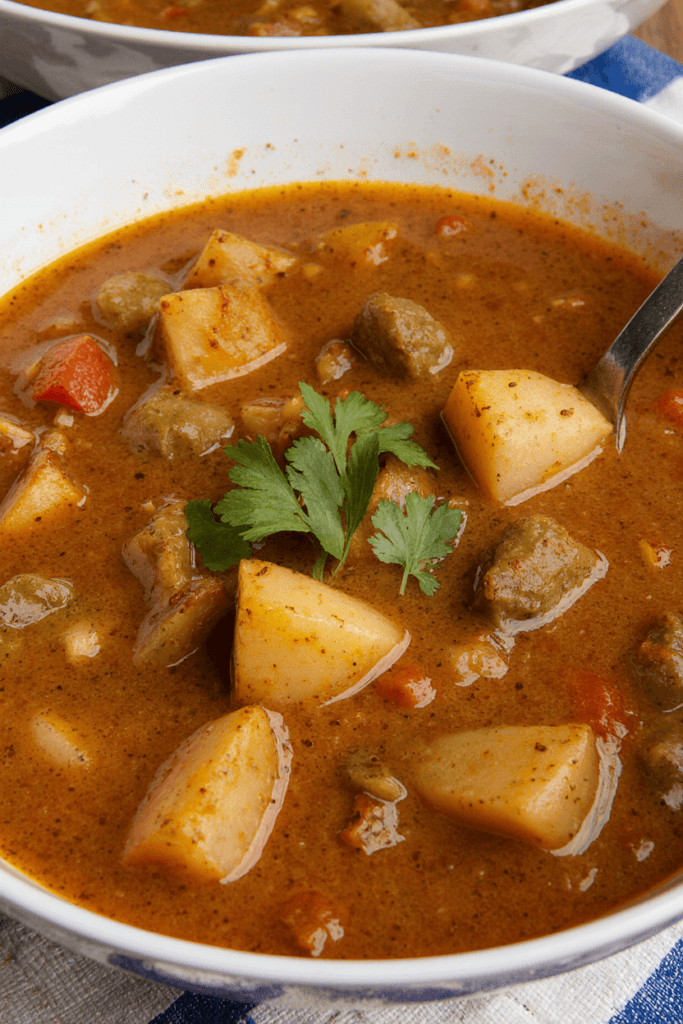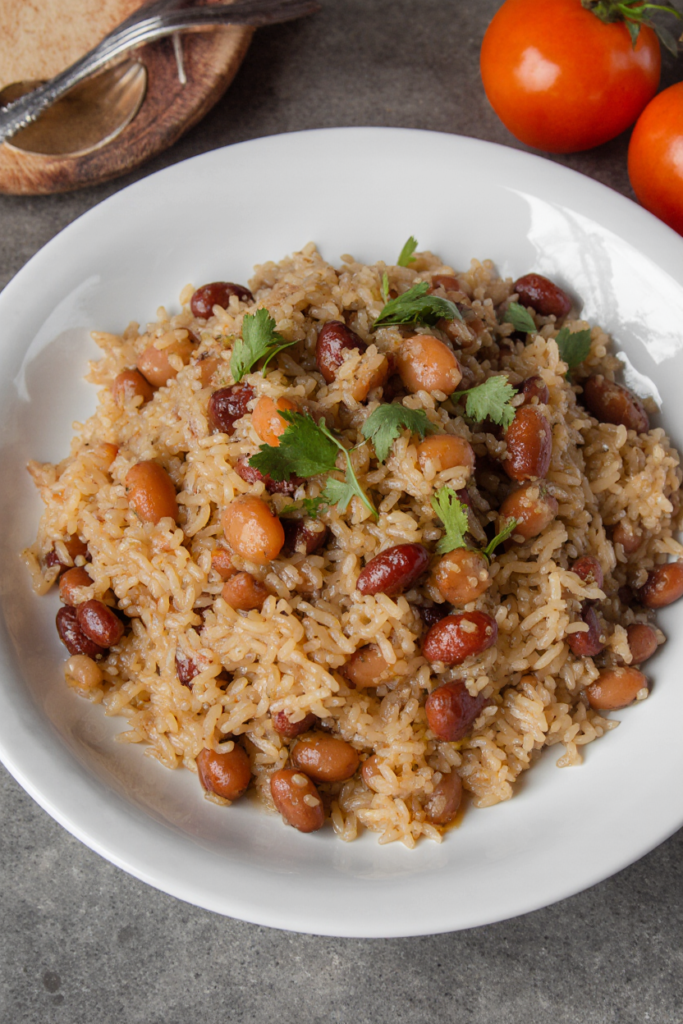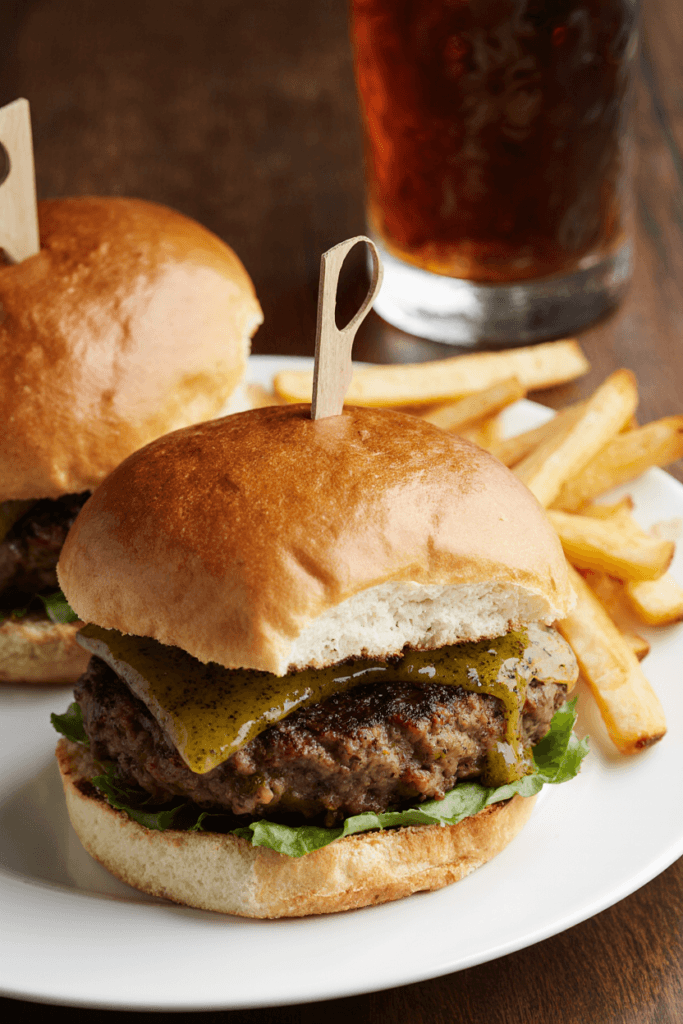Dominican food is bold, colorful, and full of heart. It tells a story of heritage, family traditions, and the fusion of cultures from African and Taino to Spanish and Middle Eastern. Whether you’re new to Caribbean cuisine or just craving some comforting island flavors, you’re in for a treat.
In this flavorful guide, we’ll explore food from Dominican Republic recipes that define the country’s culinary landscape. From hearty stews to sweet, creamy desserts, each dish comes with its own charm. We’ll also dive into the best street foods, holiday meals, and handy tips to recreate these classics at home. Stick around to discover not just recipes, but a slice of Dominican life one delicious bite at a time.
Introduction to Dominican Cuisine
What Makes Dominican Food Unique?
Oh, where to begin! Dominican food is like a tropical symphony—a blend of flavors that feel both homey and exotic. Unlike spicy Latin American dishes, Dominican meals favor richness over heat. That means you’re more likely to taste garlic, oregano, and sazón than chili peppers.
What really sets it apart? Simplicity meets depth. From humble beans and rice to elegant slow-cooked stews, Dominican food knows how to turn everyday ingredients into soul-satisfying meals. Think of it as Caribbean comfort food with a twist.
Moreover, every meal seems to reflect the country’s deep agricultural roots. Plantains, yuca, rice, and fresh herbs are staples. Whether it’s breakfast, lunch, or dinner, these ingredients are part of the rhythm of Dominican life.
Cultural Influences in Dominican Republic Recipes
Here’s the cool part Dominican food is a true fusion cuisine. It marries the bold flavors of Africa, the staple ingredients of the native Taino people, and the techniques and seasonings of Spanish colonists. Add a pinch of Arabic influence (hello, kipes!), and you’ve got a cuisine that’s rich in history and flavor.
You’ll notice dishes like sancocho, which echoes Spanish stew traditions but with a Caribbean twist. Or mangu, a Taino-inspired plantain mash that’s now a beloved breakfast staple.
This cultural blend is why food from Dominican Republic recipes offers something for everyone no matter where you’re from or what your taste buds crave.
Top Traditional Dominican Dishes You Must Try
Sancocho: The National Stew of the Dominican Republic

If there’s one dish that captures the essence of food from Dominican Republic recipes, it’s sancocho. This hearty stew is often made with seven different meats yes, seven! It’s a celebration in a bowl, simmered with root vegetables like yuca, plantains, and sweet potatoes, all swimming in a flavorful broth.
Though it sounds like a feast for special days, Dominicans enjoy sancocho on Sundays or during big gatherings. The secret lies in layering flavors. First, the meats are browned with garlic, onions, and cilantro. Then, starchy veggies and seasoning cubes are tossed in for that rich, velvety finish.
Want comfort food with a twist? This dish delivers every time.
Mangu: A Breakfast Staple Made with Plantains
Mangu is the king of Dominican breakfasts. Made by boiling and mashing green plantains with a bit of oil or butter, it’s often topped with sautéed onions and served with fried cheese, eggs, and salami. Locals lovingly call this combo “los tres golpes” (the three hits).
Despite its simplicity, mangu is packed with flavor. And better yet, it’s gluten-free, vegan-friendly (without the add-ons), and incredibly filling. In many ways, it represents how food from Dominican Republic recipes turn humble ingredients into iconic dishes.
Tostones and Maduros: Two Ways to Enjoy Plantains
Dominicans love plantains, and they know exactly how to make them sing. Tostones are made by slicing green plantains, frying them, smashing them flat, and then frying them again. The result? Crispy, salty rounds perfect for dipping or pairing with meat.
On the flip side, maduros are made from ripe plantains. They’re sweet, soft, and caramelized during cooking kind of like a tropical dessert side dish.
These two simple recipes showcase how versatile plantains can be in Caribbean cuisine.
Arroz con Habichuelas: Rice and Beans as a Daily Meal

No Dominican meal is truly complete without arroz con habichuelas. This dynamic duo white rice and stewed red or black beans—is comfort food at its finest. It’s often served with a protein like chicken or pork and maybe a few slices of avocado on the side.
In fact, if you’re exploring food from Dominican Republic recipes, expect this combo to pop up over and over again. It’s everyday magic, filling and flavorful.
Pollo Guisado and Carne Guisada: Dominican Meat Stews
These slow-cooked stews are pure flavor bombs. Pollo guisado (braised chicken) and carne guisada (braised beef) are staples at Dominican dinner tables. Cooked low and slow in tomato-based sauces with peppers, onions, and garlic, these dishes melt in your mouth.
Served with rice, beans, and maybe some tostones, they define the phrase “home-cooked goodness.”
Delicious Dominican Street Food Recipes
Kipes (Quipes): Middle Eastern Influence in Dominican Street Fare
One surprising gem in food from Dominican Republic recipes is kipes, a tasty street snack with Middle Eastern roots. Brought by Lebanese immigrants, these deep-fried bulgur rolls are stuffed with ground beef, herbs, and spices.
They’re crunchy on the outside and juicy on the inside often sold at food stands and local parties. A squeeze of lime brings them to life. It’s fusion food done right.
Empanadas Dominicanas: Crispy, Savory Hand Pies
Empanadas are a Dominican street food staple and for good reason. These golden turnovers are stuffed with a variety of fillings like ground beef, cheese, or chicken. Each bite delivers a satisfying crunch followed by a burst of flavor.
The dough is often seasoned, which sets them apart from empanadas found elsewhere. Whether fried or baked, they’re always a hit. It’s no surprise that food from Dominican Republic recipes includes so many variations of this crowd-pleaser.
Chimichurri Burgers: Dominican-Style Sandwiches

Nope, not to be confused with the Argentine chimichurri sauce. The Dominican chimi is a burger made with seasoned ground beef or pork, topped with crunchy cabbage slaw, ketchup, and mayo all stuffed inside a soft roll.
Sold mainly by street vendors at night, it’s messy, juicy, and totally addictive. Many say you haven’t really lived until you’ve had a late-night chimi in Santo Domingo.
This is street food with personality bold, flavorful, and unapologetically Dominican.
Sweet Dominican Republic Recipes to Satisfy Your Cravings
Flan and Dulce de Leche: Classic Dominican Desserts
When it comes to classic sweets, Dominican flan reigns supreme. It’s creamy, silky, and topped with a rich caramel glaze that melts in your mouth. Traditionally made with sweetened condensed milk, evaporated milk, and eggs, flan is baked until perfectly set. Though it looks fancy, it’s surprisingly easy to whip up.
Another must-try? Dulce de leche. This golden, caramel-like spread is made by slowly simmering milk and sugar until thick and gooey. Spread it on toast, drizzle it over flan, or eat it with a spoon no judgment here!
Both desserts are wildly popular and show how food from Dominican Republic recipes cater to the sweet tooth in a big way.
Pudín de Pan: Traditional Dominican Bread Pudding
Pudín de pan is a humble dessert with a rich payoff. Made from leftover bread, cinnamon, nutmeg, vanilla, and raisins, it’s baked until the edges are crisp and the center is soft and custardy. Every Dominican grandma has her own secret version of this dish.
It’s the kind of dessert that feels like a warm hug cozy, simple, and full of flavor.
Habichuelas con Dulce: Sweet Cream of Beans for Easter
Now here’s something uniquely Dominican: habichuelas con dulce, a dessert made from red beans, coconut milk, cinnamon, and sweet potato. Yes, you read that right sweet beans! It’s traditionally served around Easter and is one of the most beloved food from Dominican Republic recipes tied to culture and faith.
Don’t knock it till you try it it’s sweet, spiced, and silky smooth.
For more delicious sweets and international desserts, check out our easy no-bake dessert recipes on ChefFeRecipes!
Dominican Food for Special Occasions and Holidays
Pastel en Hoja: Plantain or Yucca Tamales for Christmas
During Christmas, Dominican kitchens come alive with the smell of pastel en hoja. These are flavorful tamales made with mashed green plantains or yucca, filled with seasoned meat, and wrapped in banana leaves before being boiled.
They take some time to prep, but that’s part of the tradition families gather in the kitchen to make them together. It’s about more than just food; it’s about connection and celebration.
This dish is a festive favorite and a staple in food from Dominican Republic recipes used for special occasions.
Moro de Guandules con Coco: Coconut Pigeon Pea Rice for New Year
Rich and fragrant, moro de guandules con coco is a must-have during the New Year festivities. This rice dish blends pigeon peas, garlic, peppers, and coconut milk into a creamy, dreamy side that’s often paired with roasted pork or chicken.
The coconut gives it a tropical depth, making it feel festive and warm. It’s one of those Dominican holiday dishes that brings the whole table together simple yet packed with tradition.
While these meals are reserved for holidays, they’re worth making anytime you want a taste of the island’s joy.
Tips for Cooking Authentic Dominican Recipes at Home
Essential Spices and Ingredients in Dominican Cooking
If you want to cook like a Dominican, you’ve got to start with the right flavors. Dominican recipes rely on a few essential seasonings that bring every dish to life. Garlic, oregano, onions, cilantro, and sazón (a mix of spices with a touch of color) are must-haves. You’ll also want to stock up on adobo seasoning, tomato paste, and bouillon cubes.
Of course, staples like plantains, rice, beans, and yuca are the heart of many meals. Coconut milk and olives often sneak their way into savory dishes, adding depth and creaminess.
So before you jump into food from Dominican Republic recipes, take a moment to prep your pantry it makes all the difference!
Tools and Cooking Techniques for Authentic Flavor
You don’t need fancy gadgets to make Dominican food, but a few tools help. A sturdy caldero (a thick-bottomed pot) is key for making rice dishes like moro or locrio. A wooden pilón (mortar and pestle) comes in handy for crushing garlic and herbs, the traditional way.
Many Dominican dishes are slow-cooked or braised, so patience pays off. Let stews simmer, let flavors marry, and don’t be afraid to taste as you go. That’s how home cooks bring love into every bite.
Health and Nutrition in Dominican Cuisine
Is Dominican Food Healthy? Balancing Flavor and Wellness
Like many cultural cuisines, Dominican food can be healthy it just depends on how it’s prepared. Grilled meats, stewed beans, boiled plantains, and fresh salads are regular parts of a Dominican plate. These ingredients are naturally rich in fiber, vitamins, and lean protein.
However, some popular food from Dominican Republic recipes, like fried tostones or rich flan, are best enjoyed in moderation. Thankfully, the cuisine is easy to adapt if you’re watching your diet.
Adapting Traditional Recipes for Modern Diets
Want to make things lighter? Swap white rice for brown or cauliflower rice. Use olive oil instead of lard or butter, and grill your meats instead of frying. Even a dish like mangu can be modernized try mixing it with a little mashed cauliflower or adding avocado on top for healthy fats.
So yes, you can enjoy the rich, comforting flavors of Dominican food without straying from your wellness goals.
FAQs :
What is Dominican Republic’s famous food?
Without a doubt, sancocho ranks as the most famous food in the Dominican Republic. This hearty stew features several types of meat and root vegetables and often brings families together on weekends or during special celebrations. Alongside sancocho, people also love dishes like mangu, tostones, and pollo guisado. These favorites appear regularly on Dominican tables and showcase the island’s bold, comforting flavors.
What is a traditional Dominican lunch?
Dominicans usually enjoy a hearty, balanced lunch that fuels the rest of the day. In most homes, people prepare arroz con habichuelas (rice with stewed beans), carne guisada (braised meat), a fresh salad, and a few slices of avocado. Since lunch serves as the main meal, families often take their time to gather and eat together. It reflects both tradition and daily nourishment.
Does the Dominican Republic have a national dish?
Yes, it does. The Dominican Republic proudly claims sancocho as its national dish. Cooks prepare this flavorful stew using seven kinds of meat, tubers like yuca and plantains, and plenty of savory spices. People often make sancocho for big gatherings or holidays, turning it into more than a meal it becomes a celebration of community and culture.
What is the most important meal in Dominican Republic?
Lunch plays the most important role in the Dominican daily meal routine. Most people pause work or school to return home and eat with family. They usually prepare a full plate with rice, beans, meat, and vegetables. As a result, lunch provides not only physical nourishment but also a moment of connection and rest in the middle of the day.
Conclusion – Celebrating Dominican Flavor
Dominican food isn’t just about filling your belly it’s about sharing culture, history, and love through every bite. Whether it’s a holiday dish like pastel en hoja, a street snack like kipes, or a family favorite like pollo guisado, there’s something comforting in every meal.
Exploring food from Dominican Republic recipes opens the door to bold flavors and warm traditions. And the best part? You don’t have to travel far to enjoy them just bring your appetite and a little heart into the kitchen.
Go ahead pick a dish, gather your ingredients, and savor the soul of the Caribbean at your own table.

